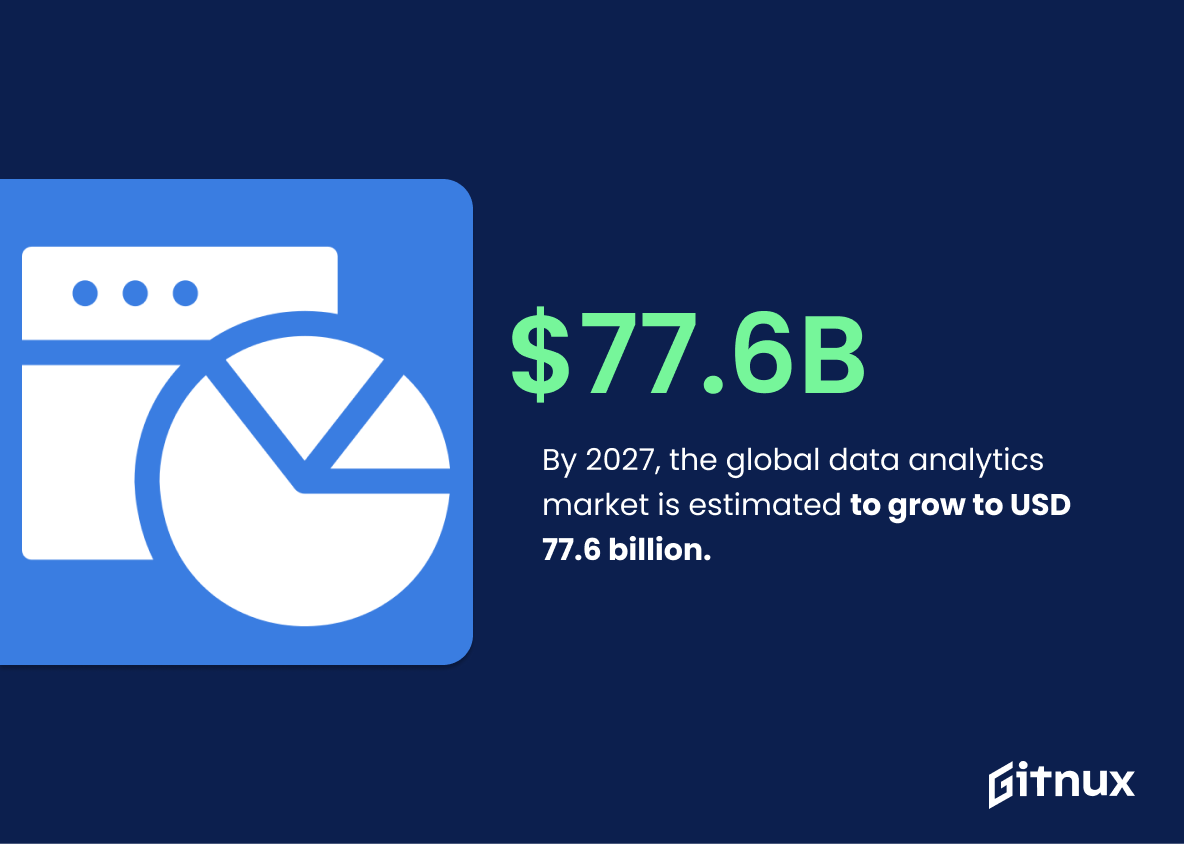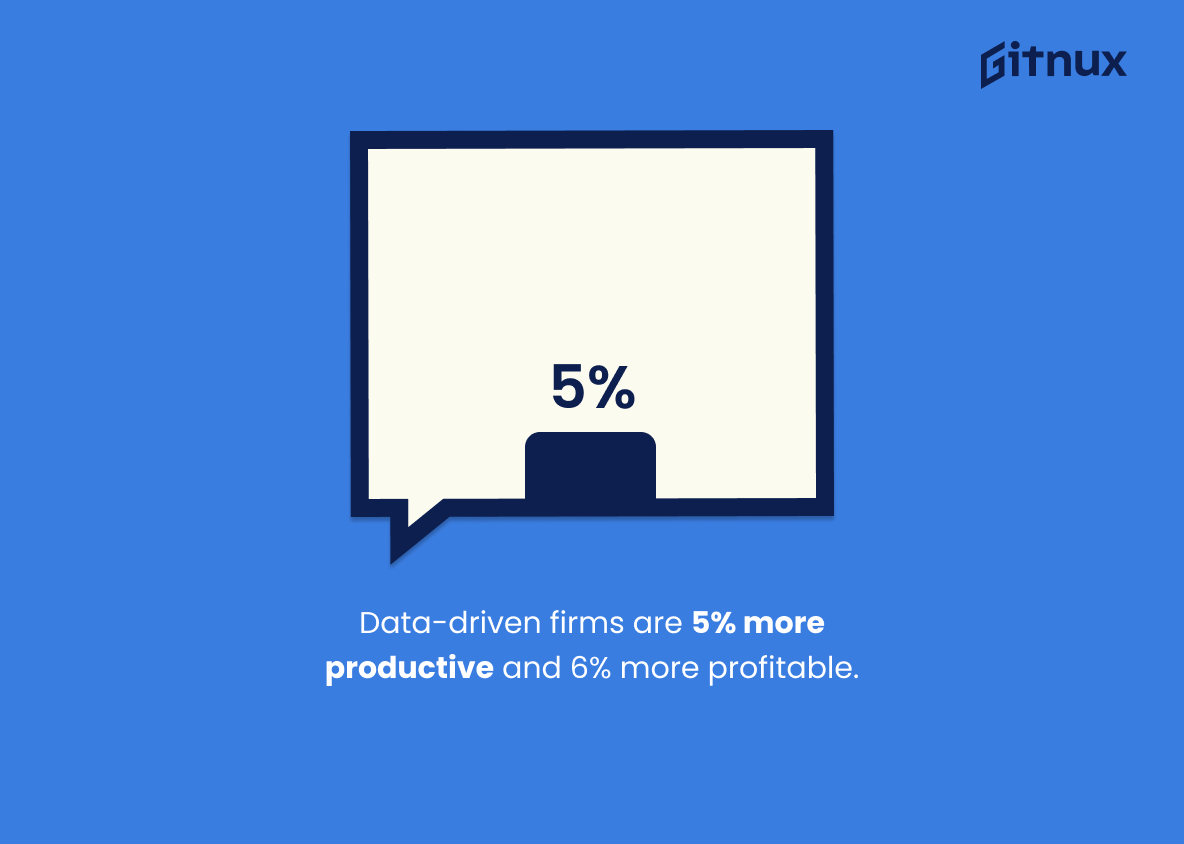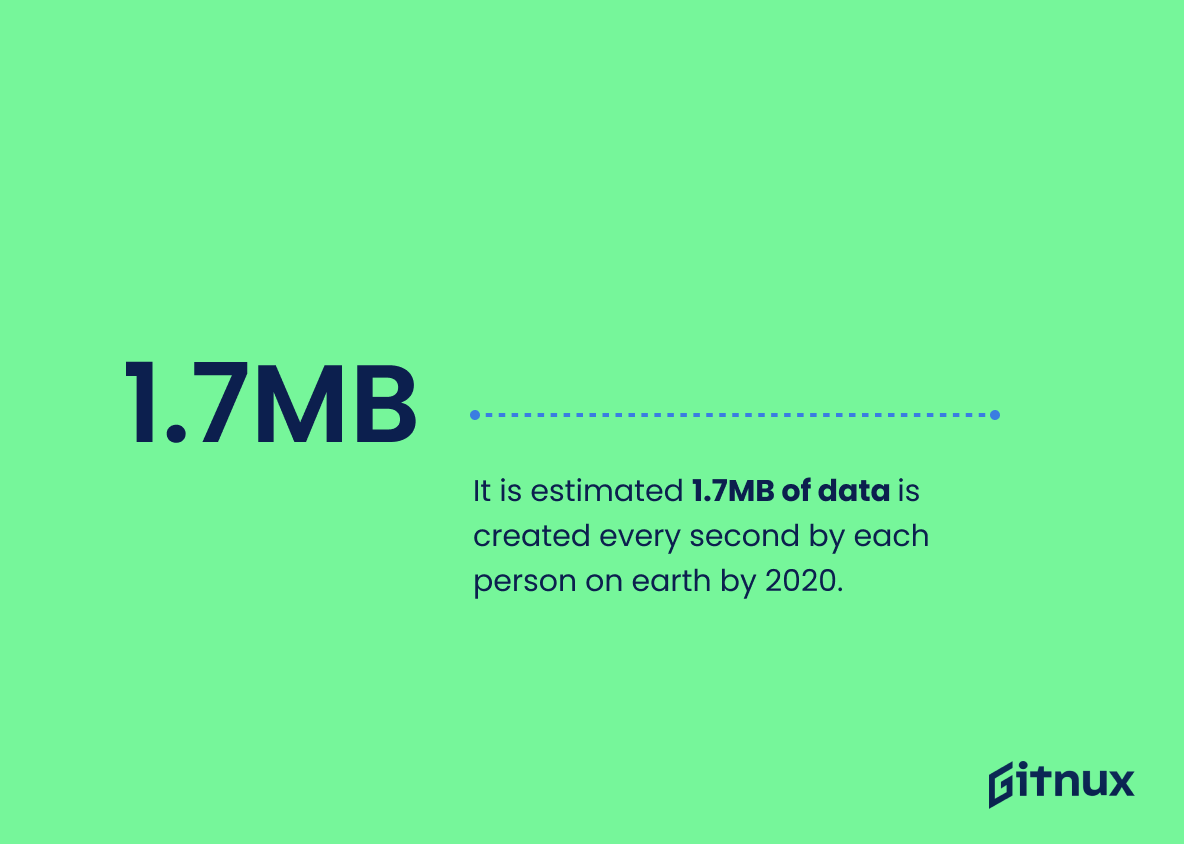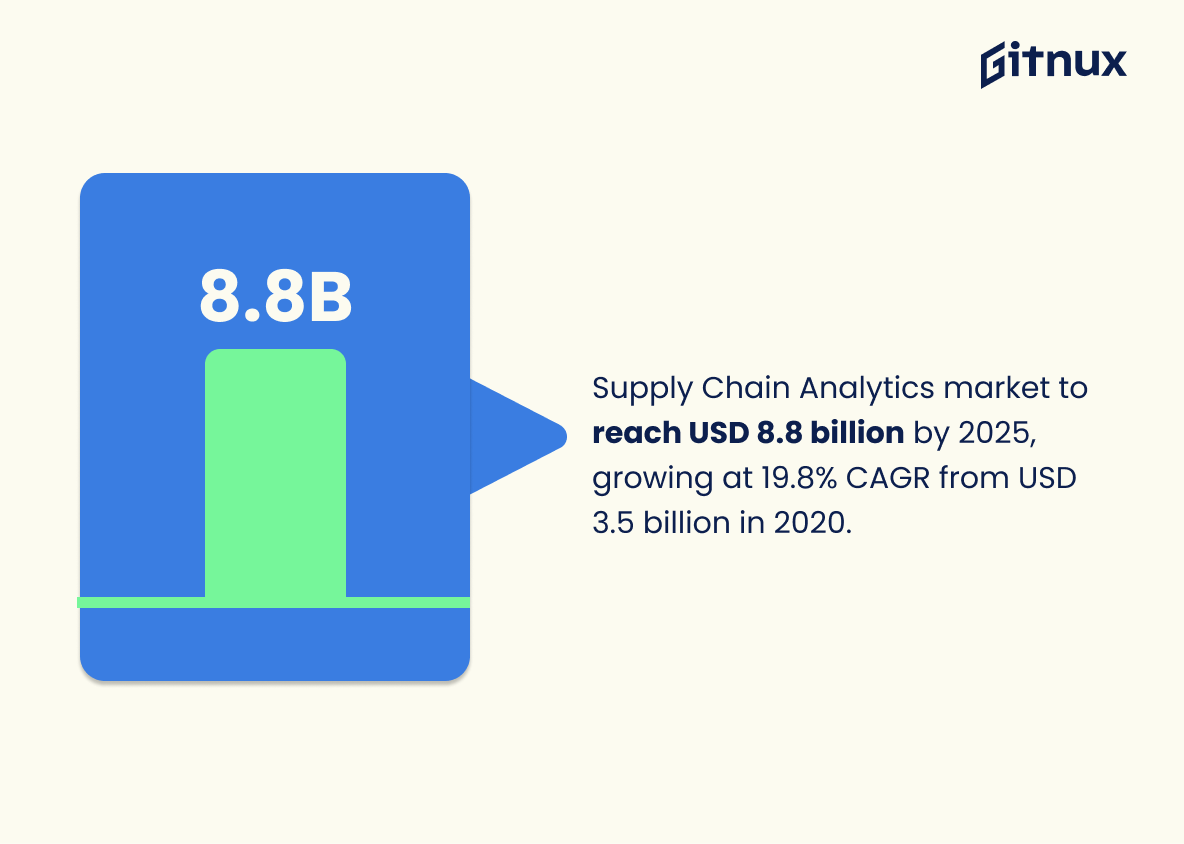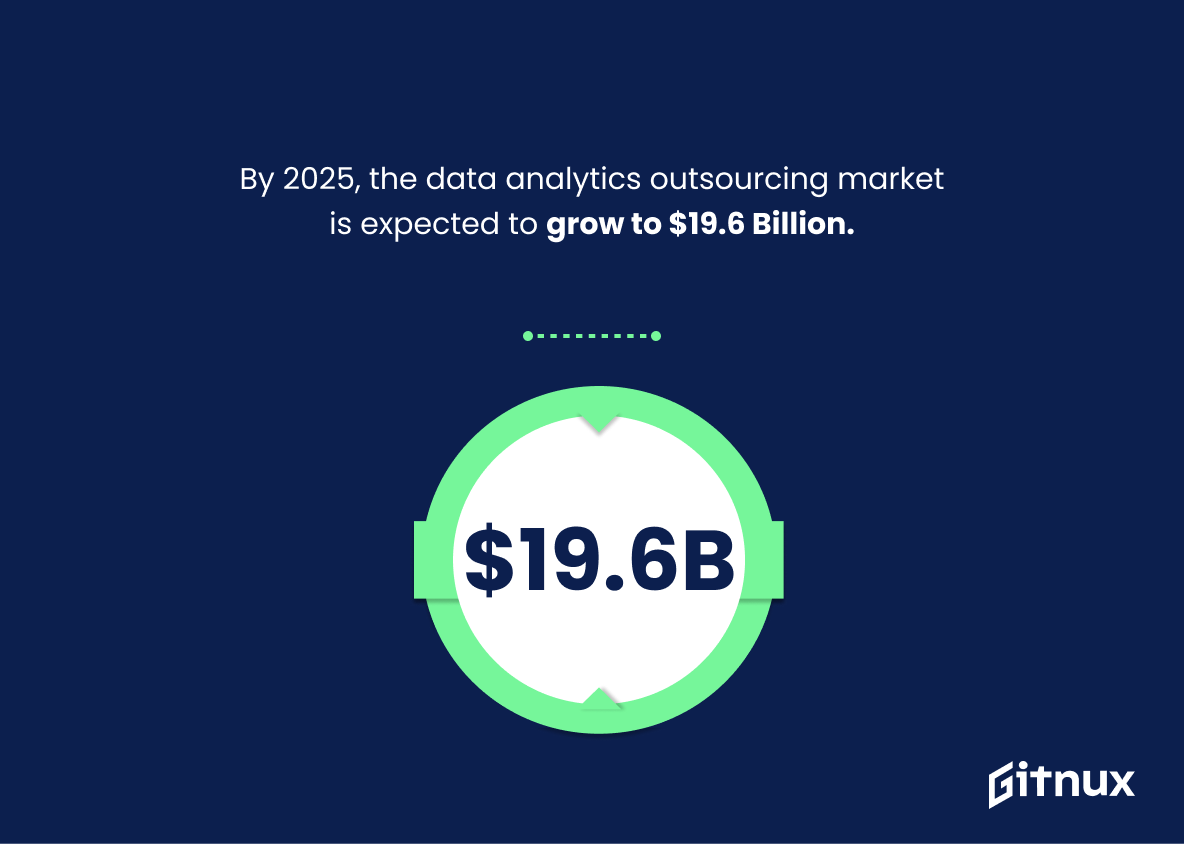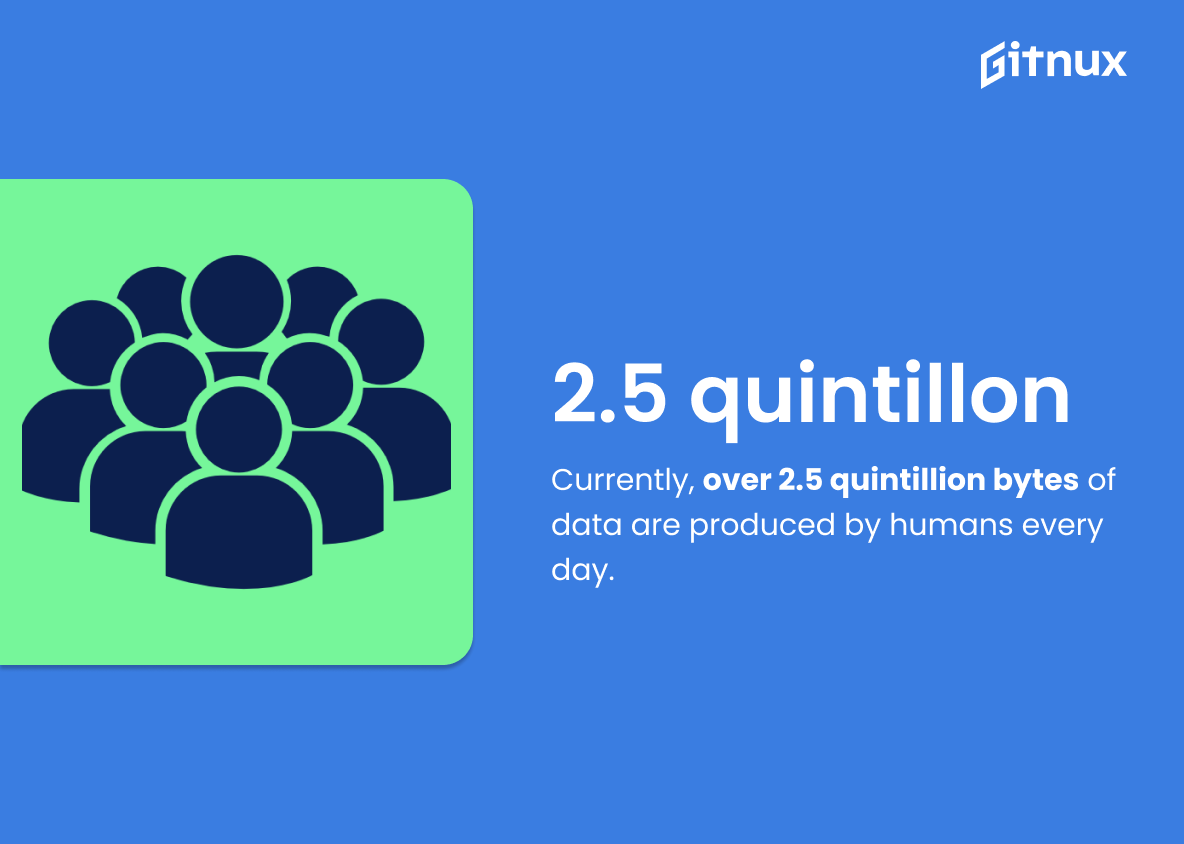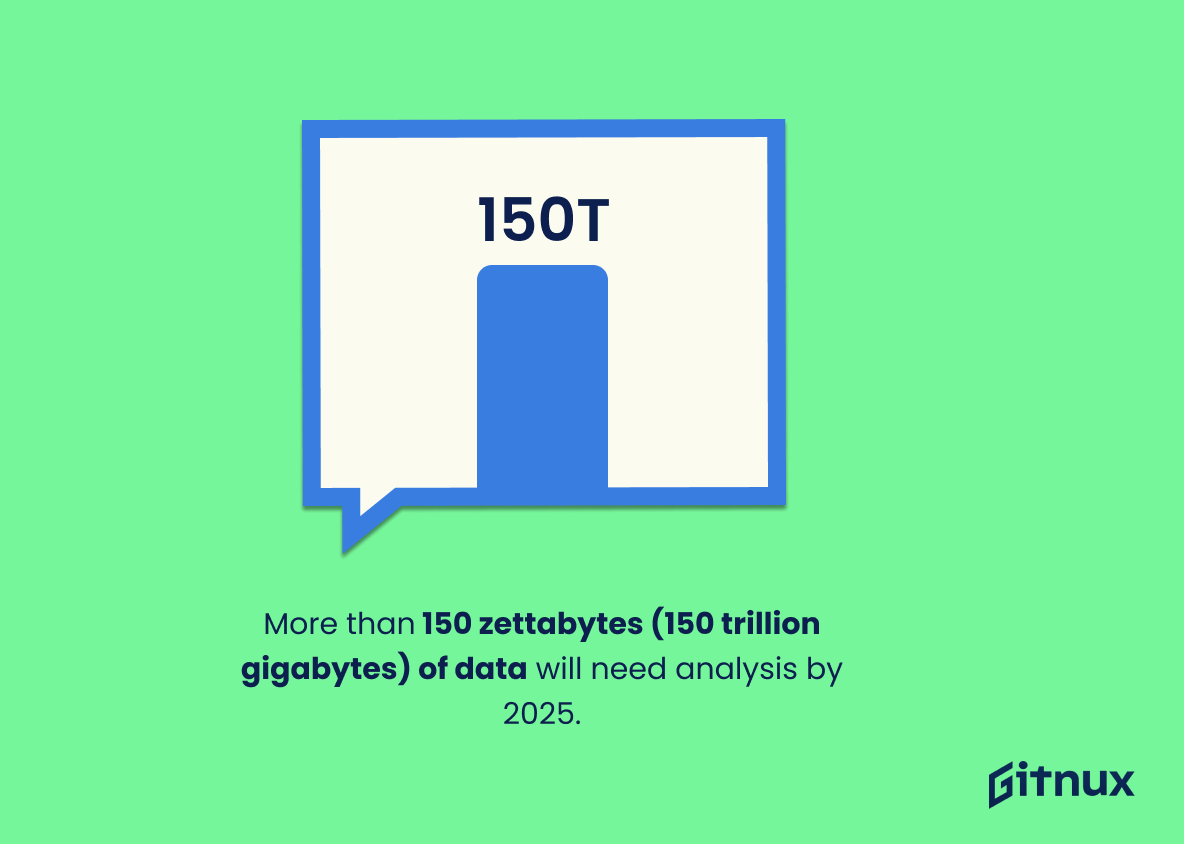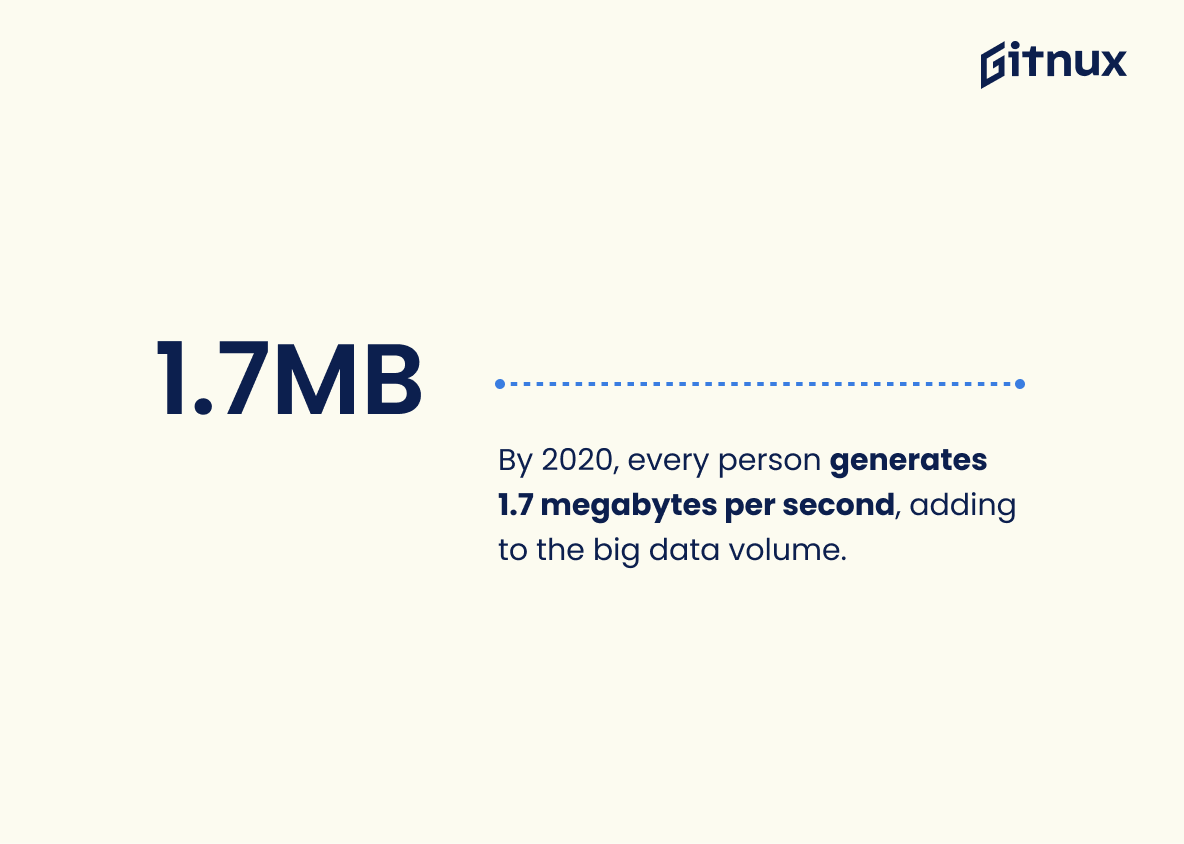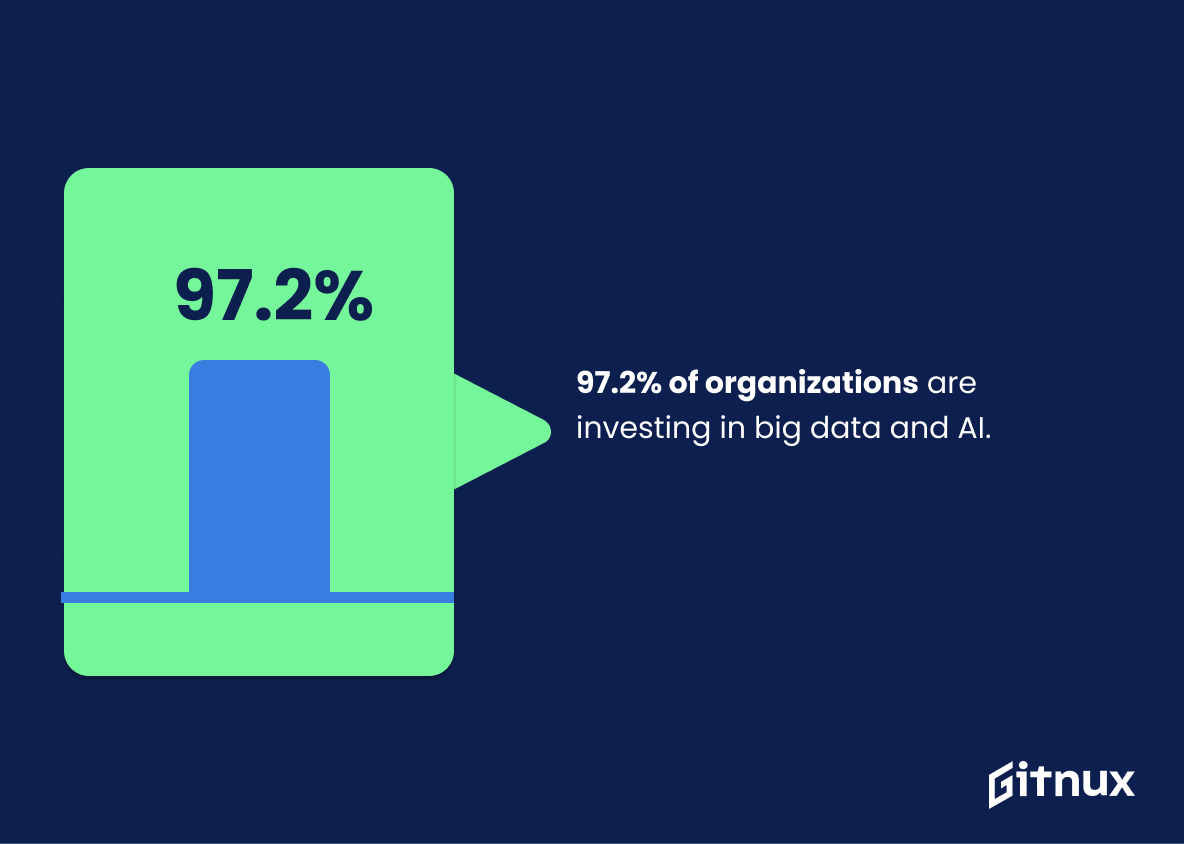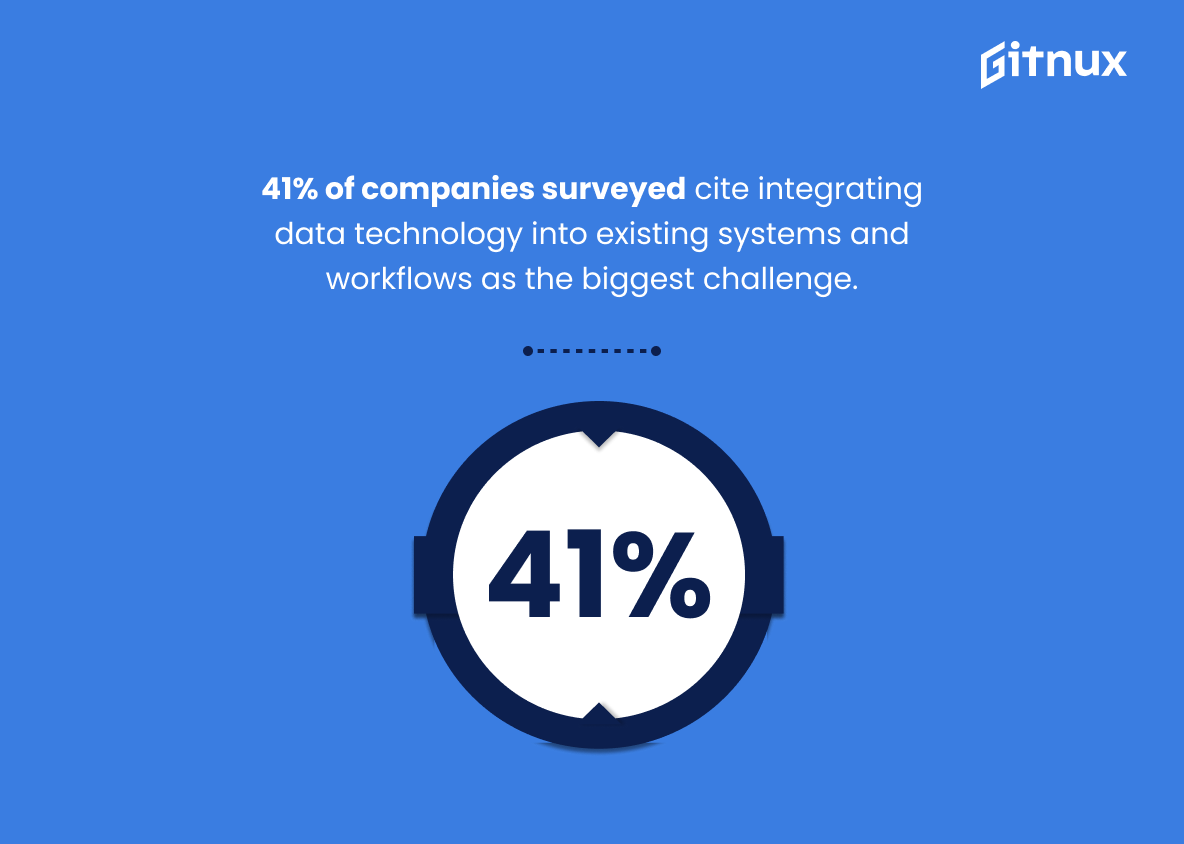The Digital Age has allowed us to collect more information than ever before. We no longer have to base vital decisions on guesswork and assumptions – we have data. And lots of it. This incredible wealth of information is nothing short of transformative, especially for business, provided we can make sense of it. This is where Data Analytics comes in.
As we delve deeper into this blog post, we’ll shed light on the Data Analytics Industry, exploring key statistics and trends that are consistently shaping this crucial field. So, whether you’re a seasoned data analyst, a business owner on the cusp of digital transformation, or a curious newcomer to the world of data, this comprehensive review promises valuable insights for all.
The Latest Data Analytics Industry Statistics Unveiled
By 2027, the global data analytics market is estimated to grow to USD 77.6 billion.
From the vantage point of the data analytics industry, a projected global market growth to USD 77.6 billion by 2027 is more than just a figure; it’s a prophecy. It paints a picture of a future where data analytics plays a bigger, more vital role than ever before. It’s a clear testament to the value and power of data analytics, as industries across the globe are willing to invest heavily in harvesting and analyzing data.
This meteoric rise not only suggests increasing recognition of the field’s potential but also foreshadows promising opportunities for businesses, professionals, and innovators in the data analytics arena. Harnessing this growth wave, they could make quantum leaps in technology, market relevance, and revenue. Thus, in the narrative of data analytics industry statistics, this projection stands as a beacon illuminating the path to an increasingly data-driven future.
Companies that make data-driven decisions are 5% more productive and 6% more profitable than their competitors.
Envision a world where companies stand on a stage of fierce competition and the rare artifact granting success is insightful data. In this captivating dance of numbers, this statistic is the golden ticket. The fact that companies embracing data-driven decisions churn out a 5% surge in productivity and a 6% increase in profitability compared to their rivals, gives a hard-hitting stroke of reality.
It portrays data as the unsung hero steering companies towards a vibrant horizon of increased productivity and elevated profits. In the gritty battlefield of business, it hammers home the burgeoning relevance of Data Analytics in today’s industry game, revealing how it can morph into a winning ace up any company’s sleeve.
It is estimated 1.7MB of data is created every second by each person on earth by 2020.
Awash in the data deluge, humanity finds itself generating an estimated 1.7MB of data per second per person by 2020. An overwhelming reality? Certainly. However, this information torrent holds a treasure trove of insight and opportunity for those skilled enough to navigate its currents. In the realm of the Data Analytics industry, these statistics become a siren’s song.
An ocean rich in potential knowledge, the Data Analytics industry finds in this statistic a tool to estimate, measure, and predict trends across various sectors. It highlights the burgeoning demand for data analytics expertise in order to transform these raw, unstructured data into meaningful insights. This trend underlines the ever-increasing importance and role of data analysts who render this sea of data into clear streams of strategic decisions, thereby fortifying industries.
Moreover, this statisticians’ snapshot showcases the sheer volume of data at humanity’s disposal. Every email sent, website visit, social media post, and digital action contributes to this data generation, creating an ever complex and evolving dataset that invites dedicated exploration.
Imagine, then, the undiscovered patterns and trends lying beneath this data surface. To the Data Analytics industry, it’s not just statistic – it’s a whole new frontier waiting to be conquered. With every second and every individual adding to this data deluge, the opportunities for new insights and solutions multiply exponentially. With every 1.7MB of data, the industry finds itself challenged and invigorated, ready to break new ground in an endlessly changing landscape.
Supply Chain Analytics market size to grow from USD 3.5 billion in 2020 to USD 8.8 billion by 2025, at a Compound Annual Growth Rate (CAGR) of 19.8% during the forecast period.
Highlighting the impressive projected growth of the Supply Chain Analytics market clearly underscores the rapidly escalating prominence and growing strategic importance of Data Analytics. With a rise from USD 3.5 billion in 2020 to an anticipated USD 8.8 billion by 2025, there is an undeniable explosion of investment in this sector. The forecasted Compound Annual Growth Rate (CAGR) of 19.8% further accentuates the exponential scale of this evolution.
This phenomenal growth trajectory serves as a beacon, illuminating the surge in demand for data-driven solutions across industries. In a blog post examining Data Analytics Industry Statistics, such a striking trend is not merely an isolated piece of data, but a testament to the transformative power of data analytics, its increasing adoption, and the immense potential it holds for shaping businesses in the future.
By 2025, the data analytics outsourcing market is expected to grow to $19.6 Billion.
The pulsating heartbeat of the global business ecosystem, data analytics, is projected to undergo a seismic shift by 2025. As the golden age of information races forward, an explosion in the data analytics outsourcing market could reach an astronomical $19.6 billion. This potential leap signifies a growing agility and appetite of businesses to harness, interpret, and transform raw data into beneficial strategies.
It paints a vivid picture of the dynamic landscape of the data analytics industry, demonstrating the rising investment and the escalating trust businesses are placing in outsourcing partners. More than a mere statistic, it represents a profound shift in how companies understand their customers, markets, and themselves. A compelling insight like this underlines the post’s vision, that the future of the data analytics industry is not just promising, but primed for extraordinary growth.
Currently, over 2.5 quintillion bytes of data are produced by humans every day.
In the pulsating veins of our information era, the heartbeat is defined by the staggering 2.5 quintillion bytes of data produced by humans daily. This digit, astronomical as it appears, cascades its significance all over the landscape of Data Analytics Industry. As a meteor shower impacts a planet’s surface, this deluge of data alters the terrain of data analytics constantly.
To comprehend the sheer magnitude, think about how this towering trail of online transactions, social media posts, emails, videos, and digital images would provide ever-refreshing raw materials for the data analytics industry to sift, sort, and examine, spawning insights never conceivable before. Guided by these insights, businesses can unlock more potential, realize unseen opportunities, and predict future trends with greater accuracy.
Furthermore, this tells us about the growing importance of advanced tools and skilled data scientists in the industry to manage such colossal data. As the data production continues to snowball, professionals wrestling with these quintillion bytes would become akin to archaeologists deciphering the secrets inscribed on this data artifacts, painting a picture of our digitalized world in detail never appreciated before. The field is vast, the possibilities endless. For those daring to venture into this field, it’s akin to exploring a new universe, one byte at a time.
More than 150 zettabytes (150 trillion gigabytes) of data will need analysis by 2025.
Unearth the massive treasure of data waiting for exploration. A prediction of an astronomical 150 zettabytes of data in need of analysis by 2025 portrays a future where our current data landscape expands by leaps and bounds. We’re looking at an information goldmine that, if harvested strategically, can revolutionize business decisions, consumer insights, market trends, and scientific research.
Wrapped in this zettabyte behemoth are profound insights and breakthroughs just waiting to happen. The digits merely highlight the vast potential and accelerated growth of the data analytics industry in the upcoming years, thereby emphasizing career opportunities, business growth, and technology advancement in this sector. Sensing the tsunami of data is key in preparing for and leveraging the windfalls of the data analytics industry. Enjoy the ride on this data rollercoaster.
By 2020, every person generates 1.7 megabytes per second, adding to the big data volume.
Dive into a captivating pictorial, envisage each person on the planet churning 1.7 megabytes of data per second in the year 2020. This colossal amount uncovers an ocean of opportunities for the Data Analytics Industry. This huge data volume metamorphoses into a smorgasbord of user insights, behavior patterns, and business forecasts, becoming the gold mine for data analysts to extract value from.
The data generated, so profuse in its depth and diversity, casts a pivotal steer on the growth trajectory of the analytics industry. It’s like this: the more rich and varied the information, the more we can learn and predict – opening an array of business prospects.
The ability to process this gigantic data grants not just insights into customer behavior but also equips businesses with efficiency, cost reduction and gives them a competitive edge in their strategy planning. This statistic truly underscores the vast potential and the consequent demand for data analytics that reshapes the business industry’s future.
97.2% of organizations are investing in big data and AI.
The staggering statistic that 97.2% of organizations are investing in big data and AI paints a vivid picture of the seismic evolution tipping the scales in the Data Analytics industry. This bold number pulsates with the vital role big data and AI are inheriting, underscoring their foothold in the decision-making tables across organizations.
Mimicking the point of no return in a revolution, it’s awash with the promise of an era where data-driven insights and AI-powered solutions are not just extras but necessities in corporate strategies. The blog post, “Data Analytics Industry Statistics”, is illuminated by this statistic, echoing the loud relevance and rapidly spreading adoption of big data science and AI for its readership. It acts as a clarion call for those still on the fence, advocating their adoption journey towards these technologies.
41% of companies surveyed cite integrating data technology into existing systems and workflows as the biggest challenge.
In the unfolding narrative of the Data Analytics Industry, the statistic that 41% of companies surveyed see the integration of data technology into existing systems and workflows as their greatest hurdle stands as a compelling protagonist. It reflects the prevailing industry paradox – the very technology purposed to unravel complex data algorithms and drive insightful business strategies is simultaneously a conundrum due to its intricate integration process.
Crafting this statistic into our comprehension helps underscore the persistent need for more streamlined, user-friendly systems that can seamlessly merge with existing workflows. This paves the way for tech innovators and solution providers to focus on creating tools that not only help analyze data but also ensure a smooth transition and integration into existing systems.
Moreover, acknowledging such a statistic resonates with audience’s struggles related to data technology adoption, catapulting the discussion towards possible ways to overcome this industry-wide challenge. Consequently, it becomes a powerful catalyst pushing for advancements and innovation in the Data Analytics domain. It illustrates that, while the industry is high-tech and rapidly developing, it is yet in desperate need of solutions that mesh with what is already in place.
95% of businesses need to manage unstructured data, a complex task for data analytics.
Dancing within the complex interplay of numbers and facts, the statistic that reveals ‘95% of businesses grapple with managing unstructured data’ delivers a striking revelation. Wrapped within these numerical boundaries are countless companies besieged by seemingly insurmountable analytical challenges. This figure, standing taller and prouder than most, forms a pulsating heart of the conversation around Data Analytics Industry Statistics.
It underscores the sweeping need for adept data interpretation tools and well-honed expertise in unstructured data management, painting a vivid picture of a market poised on the brink of explosive growth. Much like mining for gold, these businesses are besieged by a landslide of unsorted data, waiting for the deft hands of experts to pan the nuggets of insights from the silt of irrelevance.
To tune into these numerical whispers is to understand a vital chord in the symphony of the data analytics world. The pervasiveness of dealing with unruly data marks it as one of those elusive keys capable of unlocking a vibrant future for data analytics’ intricate landscape. It highlights the unceasing demand for solutions, and the potential for incredible growth within the sector – a rhythm that dances right off the charts.
27% of executives describe their big data projects as successful.
Delving into the realm of data analytics, this particular statistic casts light upon the potent reality of big data initiatives. The revelation that only 27% of executives regard their big data projects as successful provides readers with a pragmatic view into the challenging terrain of data analytics. It hints at the demanding nature of such undertakings, emphasizing that forthrightness, commitment, and proficiency are integral to navigate this data-infused landscape successfully.
In the grand scheme, this percentage is an inviting narrative for both current industry players and aspirants. For the initiated, it serves as a gentle reminder of the continuous indispensability of refining strategies, boosting skills, and harnessing innovative technologies. For newcomers entering the data analytics industry, this statistic conveys the essential wake-up call, showcasing the arena’s harsh realities along with vast opportunities.
The demand for data scientists is projected to grow by 28% by 2020.
Announcing this insightful projection of 28% growth in demand for data scientists by 2020 elevates the significance and potential of the Data Analytics Industry. This percentage underscores the accelerating reliance of various industries on data-driven insights and the consequent need for experts who can sieve through complex data sets.
This advancement in data technologies paints an optimistic future for data science professionals, telling them that their skills will only gain more value and relevance. Hence, for anyone already engaged in this field or those considering a career switch, this statistic serves as a glowing beacon, heralding rising opportunities, guaranteeing a prosperous future path in the Data Analytics arena.
The use of big data and analytics in the healthcare industry can save the US healthcare industry $300 billion a year.
Delving into the fascinating world of data analytics industry statistics, it’s impossible to overlook such a compellingly revealing number: the potential for the US healthcare industry to save an astounding $300 billion per year through the adoption of big data and analytics. Picture this treasure not in terms of dollar signs, but rather in the transformative changes it could bring.
Hearing “300 billion” punctuates a distinct footnote of intrigue, provoking one to marvel at the enormity and the untapped potential much like uncovering hidden gems in a gold mine. Within the realms of the healthcare industry, adoption of data analytics symbolizes a vast frontier of opportunities for cost savings, operational efficiencies, research acceleration, and improved patient outcomes.
Furthermore, this statistic underscores the significance of data analytics industry by implicitly reiterating how harnessing the power of big data can result in not just billions, but hundreds of billions of savings. In a world brimming with data, the enormity of such a number tells a tale of transformative potential, blazoning the golden era of data analytics. And that is no silent whisper in just the healthcare industry, but a resounding echo throughout diverse industries, a narrative woven into a blog post that shines a spotlight on data analytics industry statistics.
The banking industry is estimated to gain $1.2 trillion annually from effective use of data analytics.
Diving headfirst into the significance of this $1.2 trillion figure sheds light on the immense financial advantages that data analytics could bring to the banking industry. It serves as a poignant testament to the transformational power of data analytics, bridging the gap between potential and actual profits.
In a sea of industry statistics, it exemplifies the potent potential that the appropriate deployment of data analytics holds, not merely as a contemporary buzzword, but as a veritable catalyst for monumental revenue generation within the banking sphere. This figure becomes a beacon, illuminating the unambiguous reality; data analytics are far more than theoretical—they are a financial game-changer.
Conclusion
The rise of data is ceaselessly transforming the digital landscape. The data analytics industry, based on the statistics, is undoubtedly powering ahead, catalyzing operational efficiencies and business growth across various industries. An understanding of these statistics is not only essential but serves as a strategic compass, helping businesses to harness the power of data analytics in innovative ways.
For those on the fence, the numbers clearly illustrate how investing in data analytics can lead to improved decision-making, greater customer understanding, and consistently higher ROI. Through this lens, the future of the data analytics industry is not just promising; it’s pivotal in the path to success in today’s data-driven world.
References
0. – https://www.www.domo.com
1. – https://www.techjury.net
2. – https://www.www.newgenapps.com
3. – https://www.www.cio.com
4. – https://www.www.sas.com
5. – https://www.www.mckinsey.com
6. – https://www.www.ibm.com
7. – https://www.venturebeat.com
8. – https://www.www.globenewswire.com
9. – https://www.www.gartner.com
10. – https://www.www.prnewswire.com
11. – https://www.www.mediastreet.ie
